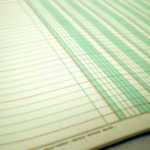Blockchain versus GDPR and who should adjust most
| 18-10-2018 | Carlo de Meijer | treasuryXL

It has now been more than four months since the European Union General Data Protection Regulation (hereafter GDPR) came into effect. This regulation aims to strengthen privacy and personal data protection in the EU, by giving private persons more control over their personal data. But it also offer a uniform set of regulations for businesses with customers in the EU region, with the risk of hefty fines in case of non-compliance.
This event however has caused a lot of concerns in the blockchain industry. At first glance some GDPR provisions seem in direct conflict with the fundamentals of blockchain technology, and may even be intrinsically incompatible with what the new European privacy rules seek to uphold. For blockchain the most controversial GDPR mandate is the “Right to be Forgotten”, giving individuals the right to request that their personal data be removed from a record. Because of its decentralised character with immutable blockchains, data however cannot be deleted. Blockchains are designed to last forever. That puts blockchain in direct opposition to the GDPR.
Main question is: Are there ways to be found so that GDPR and blockchain may co-exist? Can blockchain work properly in tandem with the new GDPR regulations without harming its fundamentals? And how should regulators react?
EU General Data protection Regulation (GDPR): what does it mandate?
The General Data Protection Regulation (GDPR) is a far-reaching privacy legislation that is designed to enhance the protection of personal data and give individuals in the EU greater control over their own data. The GDPR is requiring not only transparency into what companies will do with consumer data, but also mandating clear consent mechanisms to ensure that consumers understand what companies are sharing, with whom, and for what purpose. GDPR thereby regulates the collection, processing, transfer and retention of every EU citizen’s personal data, requiring companies to provide visibility and control to individuals, on demand. Non-compliance with GDPR can result in heavy fines.
GDPR however has a number of key provisions that could heavily impact blockchain.
Read the full article of our expert Carlo de Meijer on LinkedIn

Economist and researcher


 Last year I wrote a blog on the Hyperledger project and what that could mean for blockchain acceptance (see my blog: Hyperledger Project: collaboration pays off, 9 April 2017). We are now almost a year later and I am wondering if they are meeting my expectations. “2017 was a milestone year for Hyperledger both for new members and for new technical breakthroughs. In 2017 we doubled our membership, gaining companies like American Express, Cisco, Daimler and Baidu, and we’re expecting more companies and organizations to join in 2018.” Brian Behlendorf, Executive Director, Hyperledger.
Last year I wrote a blog on the Hyperledger project and what that could mean for blockchain acceptance (see my blog: Hyperledger Project: collaboration pays off, 9 April 2017). We are now almost a year later and I am wondering if they are meeting my expectations. “2017 was a milestone year for Hyperledger both for new members and for new technical breakthroughs. In 2017 we doubled our membership, gaining companies like American Express, Cisco, Daimler and Baidu, and we’re expecting more companies and organizations to join in 2018.” Brian Behlendorf, Executive Director, Hyperledger. Blockchain technology enables real-time settlement finality in the securities world. This may mean the end of a number of players in the post trade area. For a long time, central securities depositories (CSDs), as intermediators in the post-trade processing chain, were expected to become obsolete. CSDs, but also other existing players in the post-trade environment, are however changing their mind on these new technologies and on their future position in the blockchain world. Increasing regulation, legacy systems and costs pressures, are drivers for CSDs to at least embrace some aspects of blockchain. They are increasingly considering them as enabler of more efficient processing of existing and new services, instead of a threat to their existence. It is interesting to see that some of these actors – who could be potentially big losers in a distributed ledger technology (DLT) or blockchain system – are open to innovation with blockchain and willing to invest in DLT. Last January SWIFT and seven CSDs worldwide agreed on a Memorandum of Understanding to explore the use of blockchain technology in the post trade process esp. e-proxy voting.
Blockchain technology enables real-time settlement finality in the securities world. This may mean the end of a number of players in the post trade area. For a long time, central securities depositories (CSDs), as intermediators in the post-trade processing chain, were expected to become obsolete. CSDs, but also other existing players in the post-trade environment, are however changing their mind on these new technologies and on their future position in the blockchain world. Increasing regulation, legacy systems and costs pressures, are drivers for CSDs to at least embrace some aspects of blockchain. They are increasingly considering them as enabler of more efficient processing of existing and new services, instead of a threat to their existence. It is interesting to see that some of these actors – who could be potentially big losers in a distributed ledger technology (DLT) or blockchain system – are open to innovation with blockchain and willing to invest in DLT. Last January SWIFT and seven CSDs worldwide agreed on a Memorandum of Understanding to explore the use of blockchain technology in the post trade process esp. e-proxy voting. Almost a year ago I wrote my blog “Blockchain and the Ripple effect: did it Ripple?”. Now twelve months later we may conclude it did. And even more than that. Ripple is making many waves. A lot happened both in broadening their offerings and in enlarging their network. A growing number of banks and payment providers, increasingly join RippleNet, Ripple’s decentralized global network, to “process cross-border payments efficiently in real time with end-to-end tracking and certainty”. By using the growing set of Ripple solutions they are able to expand payments offerings into new markets that are otherwise too difficult or too expensive to reach. The focus of Ripple therefor has especially moved towards emerging markets.
Almost a year ago I wrote my blog “Blockchain and the Ripple effect: did it Ripple?”. Now twelve months later we may conclude it did. And even more than that. Ripple is making many waves. A lot happened both in broadening their offerings and in enlarging their network. A growing number of banks and payment providers, increasingly join RippleNet, Ripple’s decentralized global network, to “process cross-border payments efficiently in real time with end-to-end tracking and certainty”. By using the growing set of Ripple solutions they are able to expand payments offerings into new markets that are otherwise too difficult or too expensive to reach. The focus of Ripple therefor has especially moved towards emerging markets. Long-time regulators world-wide took a wait-and-see attitude towards the non-regulated markets for Bitcoin and cryptocurrencies. But that is changing rapidly. With the growing popularity of the crypto market, the large number of unregulated cryptocurrencies (more than 1300, greater attention is now being paid by Governments and other stakeholders around the world.
Long-time regulators world-wide took a wait-and-see attitude towards the non-regulated markets for Bitcoin and cryptocurrencies. But that is changing rapidly. With the growing popularity of the crypto market, the large number of unregulated cryptocurrencies (more than 1300, greater attention is now being paid by Governments and other stakeholders around the world. There are various signals that a number of corporates are moving their blockchain projects towards production. We recently have seen the announcement of the IBM – Maersk project, to create a blockchain based corporate. If accepted in a sufficient way by the various players in the shipping industry supply chain that could mean a real breakthrough for blockchain and other distributed ledger technologies. “The big thing that is missing from this industry to digitize and unleash the potential of the technology is really to create a form of utility that brings standards across the entire ecosystem,” Maersk’s Chief Commercial Officer Vincent Clerc.
There are various signals that a number of corporates are moving their blockchain projects towards production. We recently have seen the announcement of the IBM – Maersk project, to create a blockchain based corporate. If accepted in a sufficient way by the various players in the shipping industry supply chain that could mean a real breakthrough for blockchain and other distributed ledger technologies. “The big thing that is missing from this industry to digitize and unleash the potential of the technology is really to create a form of utility that brings standards across the entire ecosystem,” Maersk’s Chief Commercial Officer Vincent Clerc. Payments is increasingly seen as an area that is ripe for disruption, having the potential to enhance payment processing. To overcome the current structural weaknesses in the payments area including low speed, high expenses, financial institutions are increasingly adopting the idea of blockchain or distributed ledger technology (DLT). This in order to offer (near) instant cross-border payments at lower costs, higher security and more reliability. Up till recently most of these trials have been non-interoperable stand-alone solutions. But that may change!
Payments is increasingly seen as an area that is ripe for disruption, having the potential to enhance payment processing. To overcome the current structural weaknesses in the payments area including low speed, high expenses, financial institutions are increasingly adopting the idea of blockchain or distributed ledger technology (DLT). This in order to offer (near) instant cross-border payments at lower costs, higher security and more reliability. Up till recently most of these trials have been non-interoperable stand-alone solutions. But that may change!
